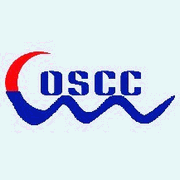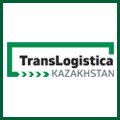NEW ZEALAND's north island Port of Tauranga has ordered two Liebherr super post panamax ship-to-shore cranes to be delivered in 2013 and 2014, bringing the number of quay cranes to seven.
Box volumes were up 17.1 per cent at Tauranga to 344,081 TEU over a six-month period, an increase attributed to strikes at the rival Ports of Auckland.
Tauranga recently announced half-year record profits, noted UK's Port Technology International, adding that Auckland also lost contracts when Maersk and New Zealand's big dairy producer, Fonterra, which shifted away from troubled Auckland.
The new cranes have an outreach of 48 metres with a lift height of 32 metres. They have a 60-tonne capacity with a hoist speed of 70-175 metres per minute and a trolley speed of 220 metres per minute as well as a crane travel speed of 45 metres per minute.
Shipping Gazette - Daily Shipping News
THE container shipping industry in Asia is expected to break-even after the second quarter, according to UBS Investment Research, reported the Taipei Times.
After posting heavy first quarter losses, and facing difficulties in raising freight rates, UBS analyst Richard said: "Earnings recovery from the second quarter could still support the industry's sentiment."
The recent increase in spot rates, broken by a renewed decline, and growth in US container imports may be major factors leading to the sector's recovery, Mr Wei said.
The Asia-Europe forward rate last week dropped below US$1,800 per TEU, its lowest level since February, the report said, citing Shanghai Shipping Exchange data.
Compared with demand from Europe, inbound trade on the west coast of the US grew faster, which may offer some support to transpacific rates, UBS said.
The stronger growth in US container import demand has seen global container shipping firms redistribute their shipping.
Evergreen Marine, Taiwan's largest container shipping firm, said it would launch a new all-water service to the US with MOL, the biggest container shipping line in Japan.
The service, linking major Asian ports to key destinations on the US east coast via the Suez Canal, would begin next month, Evergreen said in a statement.
The Green Alliance, formerly known as the CKYH alliance, also announced on Thursday that it would restructure five loops between Asia and the east coast of the US run by its members as of this month.
The move would enhance its comprehensive service network between Asia and the US by providing more competitive sailing frequencies, shortened transit times and enlarged service coverage, the alliance said in a note.
The alliance, formed in March 2002, is made up of Taiwan's Yang Ming Marine Transport Corp, Cosco, "K" Line and Hanjin.
Shipping Gazette - Daily Shipping News
Future bright, says Maersk, despite slowdown in Cambodian exports to Europe
THE Cambodia representative for the world's largest shipping company said exports from Cambodia to Europe grew by more than 60 per cent during 2011, but have since weakened, reports the Phnom Penh Post.
"Rice exports grew a lot during 2011 and a lot of it went to Poland and France," said Ben Wilson of Maersk (Cambodia) Ltd, which carries more cargo out of Cambodia than any other company. Europe received about 35,000 TEU from Cambodia during 2011, much of it coming from the garment and footwear factories here."
The jump in exports is credited to the Everything But Arms (EBA) initiative by the European Union under which all imports from Least Developed Countries (LDCs) are duty free and quota free, with the exception of armaments. Growth of transpacific shipments from Cambodia grew at about three per cent during 2011.
"There were no changes in the US so the growth stayed about the same," Mr Wilson said. Despite a big jump in 2011 exports to Europe, the European market has since weakened," said Mr Wilson. "We are seeing quite a weak market in Europe and the growth is not going to be as strong as it was last year."
While the North American market remains Cambodia's biggest, Mr Wilson predicts growth of about five per cent for that market.
"The intra-Asia trade looks like it will continue to grow. The Asian economies are not suffering as much as Europe and there's more investment from Japan, for example, in Cambodia. We may see more rice shipment growth in the region. We've seen a lot of rice to Malaysia and there's a lot of talk about rice to China."
Mr Wilson said one reason shipping out of Cambodia is expensive is because the volume is smaller, which prevents the economies of scale enjoyed by larger markets in Vietnam or Thailand. He said an efficiency study of Cambodia's ports by the Japan International Cooperation Agency (JICA) recommended private involvement in ports.
"That's something we'd like to see the government look at seriously," he said. "They've done it with airports. They could also do it with seaports. Based on our experience in other countries we've seen how privatisation of ports can increase efficiency and reduce costs. That is something we would encourage the government to consider."
Mr Wilson said he was sure the new Phnom Penh River Port, scheduled to be operational later this year, would be successful, adding that he sees a lot of potential for agriculture in Cambodia's future. "There is a lot of potential for production of the more expensive fruit like mangoes and bananas that could be sold in the overseas market."
Shipments to North America totalled about 50,000 TEU during 2011, with 60 per cent of going out of the Sihanoukville port and 40 per cent going down the Mekong to the Cai Mep port in Vietnam from the Phnom Penh River Port. That contrasts with the European shipments, 90 per cent of which depart from Sihanoukville.
Shipping Gazette - Daily Shipping News
THE Cambodia representative for the world's largest shipping company said exports from Cambodia to Europe grew by more than 60 per cent during 2011, but have since weakened, reports the Phnom Penh Post.
"Rice exports grew a lot during 2011 and a lot of it went to Poland and France," said Ben Wilson of Maersk (Cambodia) Ltd, which carries more cargo out of Cambodia than any other company. Europe received about 35,000 TEU from Cambodia during 2011, much of it coming from the garment and footwear factories here."
The jump in exports is credited to the Everything But Arms (EBA) initiative by the European Union under which all imports from Least Developed Countries (LDCs) are duty free and quota free, with the exception of armaments. Growth of transpacific shipments from Cambodia grew at about three per cent during 2011.
"There were no changes in the US so the growth stayed about the same," Mr Wilson said. Despite a big jump in 2011 exports to Europe, the European market has since weakened," said Mr Wilson. "We are seeing quite a weak market in Europe and the growth is not going to be as strong as it was last year."
While the North American market remains Cambodia's biggest, Mr Wilson predicts growth of about five per cent for that market.
"The intra-Asia trade looks like it will continue to grow. The Asian economies are not suffering as much as Europe and there's more investment from Japan, for example, in Cambodia. We may see more rice shipment growth in the region. We've seen a lot of rice to Malaysia and there's a lot of talk about rice to China."
Mr Wilson said one reason shipping out of Cambodia is expensive is because the volume is smaller, which prevents the economies of scale enjoyed by larger markets in Vietnam or Thailand. He said an efficiency study of Cambodia's ports by the Japan International Cooperation Agency (JICA) recommended private involvement in ports.
"That's something we'd like to see the government look at seriously," he said. "They've done it with airports. They could also do it with seaports. Based on our experience in other countries we've seen how privatisation of ports can increase efficiency and reduce costs. That is something we would encourage the government to consider."
Mr Wilson said he was sure the new Phnom Penh River Port, scheduled to be operational later this year, would be successful, adding that he sees a lot of potential for agriculture in Cambodia's future. "There is a lot of potential for production of the more expensive fruit like mangoes and bananas that could be sold in the overseas market."
Shipments to North America totalled about 50,000 TEU during 2011, with 60 per cent of going out of the Sihanoukville port and 40 per cent going down the Mekong to the Cai Mep port in Vietnam from the Phnom Penh River Port. That contrasts with the European shipments, 90 per cent of which depart from Sihanoukville.
Shipping Gazette - Daily Shipping News
GLOBAL Container Terminals (GCT) has unveiled plans for a multi-million dollar development of a 70-acre container terminal on the Bayonne, New Jersey, which stands to be the most advanced in the port when it opens in 2014.
With 50 feet alongside, GTC will be able to handle the largest container vessels in the world and will have total capacity to move 1.7 million TEU per year, making it one of the most efficient port terminals in the country based on throughput density per acre.
"The new Global development project, in addition to the many improvements currently underway, clearly demonstrates a long-term commitment from the Port Authority of New York and New Jersey (PANYNJ) to protect the port's pre-eminent position as a critical US gateway for global commerce," said James Devine, president and CEO, Global Container Terminals USA.
"Our expanded Global terminal facility will come on line precisely in time to help meet the demands of larger vessels transiting the Suez Canal and new wider Panama Canal," said Mr. Devine. "Since the earliest days of this country, the bi-state port has been the engine that drives the region. We plan to be a very important piston in that engine going into the future."
The Port Authority acquired the land for the project adjoining Global's existing facility in 2007, ensuring that scarce waterfront property would be used for waterfront business. A new shared gate configuration on the Port Jersey peninsula for both the existing Global facility and the new expansion area will increase trucking efficiency while mitigating potential environmental impact. The new gate facilities at Global terminal will be expanded to 29 lanes from 16 lanes.
In addition, GCT will offer intermodal rail connections via the adjacent redeveloped Greenville rail transfer facility. Massive rail-mounted gantry cranes (RMGs) will sort the container stacks to optimise productivity linking quayside crane operations with land-side connections to truck and rail transportation. Ten container stacks will be serviced by 20 new RMGs. Each container stack is capable of storing 1,665 TEU, including plugs for refrigerated equipment.
The terminal development project is expected to create construction-related jobs over the next three years. It will generate new high-technology longshoremen positions and contribute significantly to the more than US$6.4 billion in additional personal and business income the port is expected to generate from capital investments through 2017.
"We anticipate adding more advanced job opportunities as we improve the competitiveness and throughput of the port," said Mr Devine. "We will provide the training as well as the job opportunities for ILA workers to transition into the next generation of container handling. At Global and at New York Container Terminal in Staten Island, we want to continue building a vibrant working waterfront in the Port of New York and New Jersey."
Shipping Gazette - Daily Shipping News
THE UK P&I Club, one of the oldest shipping protection and indemnity insurance mutuals, has ended its financial year on February 20 with a surplus of US$11 million.
The club's free reserves and capital increased to $486 million, placing its financial strength at the top level of its peer group in the P&I sector with total assets standing at $1.6 billion. The club said investment return was reduced to 1.5 per cent as it de-risked its portfolio.
The club said that the financial year showed an improved claims trend supported in part by falling claims frequency since 2008, but sounded a warning bell that underlying claims inflation over the longer term has been between five and 15 per cent.
According to the rating agency, Standard & Poor's, the club's outlook remained stable with its rating at A minus.
"This very positive result demonstrates the club's commitment to its long-term target of maintaining a combined ratio of 100 per cent or below," said club chairman Dino Caroussis.
"Our return to the top level of the P&I market has been rewarded by increased support from new and existing members. Tonnage was up over the year and now stands at 112 million gross tonnes of owned tonnage and around 80 million gross tonnes of chartered tonnage," he said.
Hugo Wynn-Williams, chairman of Thomas Miller P&I, the club's managers said: "Where shipping markets remain depressed, the total cost of claims is expected to remain lower. While improvements in regional markets such as intra-Asian trade or in particular shipping sectors could change that outlook, the club will ensure that premium levels match likely claims trends at subsequent renewals."
Shipping Gazette - Daily Shipping News
AIR FREIGHTER acquisitions are next on Garuda Indonesia's wish list as the airline unveils plans to augment passenger bellyhold capacity with full freighter flights before year-end.
Garuda CEO Emirsyah Satar said he wanted to take advantage of rising air freight volumes in various regions of Indonesia and mounting investment in the country, announcing that he would get his first freighter by the end of this year.
Garuda will have one A330-200F in service by next January and two more joining the fleet in 2013, he said.
In 2010, there was also talk of converting up to seven of its B737-400s into all-cargo configurations, recalled Atlanta-area Air Cargo World. "This never materialised, although the concept has found favour with other carriers in Indonesia. Jakarta-based Airmark Indonesia Aviation obtained a 737-300F from GECAS in April, following a similar deal in February involving GECAS and Cardig Air," said the report.
But while Garuda signed an order for eleven A330-300 passenger planes in April, the carrier has not given details on its freighter plans. But observers are confident Garuda will carry through this time.
"I think they will bring in the freighters," said DHL Global Forwarding Indonesia general manager Ionut Mares, pointing out enhancements of the carrier's cargo facility at its Jakarta hub and the construction of a terminal for domestic freight, which will free up space at the existing facility to accommodate freighter operations.
Shipping Gazette - Daily Shipping News
DHL Global Forwarding and LifeConEx, a fully-owned DHL subsidiary and provider of end-to-end cold chain solutions, have won the Life Science Logistics Partner of the Year 2012 award in China, forging their global leadership in the niche market.
The award was presented to DHL Global Forwarding and LifeConEx by the International Quality and Productivity Centre (IQPC) at this year's Bio/Pharma Cold Chain China 2012 conference held recently in Beijing.
Shipping Gazette - Daily Shipping News
MICHIGAN-based cargo airline Contract Air Cargo's turboprop Convair CV-440 crashed landed on a freight flight from Miami to Guatemala City's airport runway 19.
As it approached the runway, the nose gear bent backwards and collapsed causing the cargo plane's left hand propeller to contact ground and penetrate the fuselage. The crash landing caused substantial damage but no injuries or deaths were reported, said Salzberg, Austria's Aviation Herald.
The CV-440 Metropolitan has a maximum payload of 49,700 pounds and was the final piston-engined variant of what were dubbed the "Convairliners," according to a Wikipedia entry.
Shipping Gazette - Daily Shipping News
Dag Schjerven, president and CEO Wilhelmsen Maritime Services (WMS), addressed the need for the international maritime industry to adopt a green shipping ethos at yesterday’s EXPO 2012 in Korea.
“Some have criticised the IMO for acting too slowly and it has been suggested local regulation might be more effective. Whilst we agree that regional initiatives have made an important contribution to the cause, exclusively-local regulation would make it very difficult for international ship owners to operate effectively. And a global industry like shipping needs global rules and standards,” he said.
Mr Schjerven discussed how the combination of engineering and global network capabilities has made it possible to develop environmental solutions for Wilhelmsen Ships Service (WSS) customers worldwide:
“By offering the best available technologies in the market we can help our customers stay compliant and reduce their vessel operating costs. The less energy a ship consumes the less fuel it will burn, resulting in reduced pollution and cost savings. The majority of vessels use large amounts of chemicals for cleaning, maintenance, water and fuel treatment. Our companies, such as Wilhelmsen Ships Service, are leading the way in bringing environmentally acceptable marine chemicals into the market.”
“Through continuous adjustments to customer demands, international regulations and new technologies, we are making constant improvements to address the environmental challenges of the maritime industry. Our green agenda fits the company’s vision of shaping the maritime industry. To us, going green makes sense.”
Source Wilhelmsen
HARD TIMES have brought about an increase in bogus claims against ship managers by shipowners, warned the International Transport Intermediaries Club (ITIC) in its latest issue of Claims Review.
The ITIC finds that shipowners are resisting payment of ship maintenance costs and end up owing ship managers, not only for their own fees but also for money paid on owners' behalf, reported London's Tanker Operator.
But when ship managers go to collect, they are charged with negligence in the running of the ship. Resulting claims are costly to defend, the ITIC said.
One case that ended up costing US$250,000 in legal fees, involved a balance of funds owed to the ship manager.
The matter remained idle for five months, until the owner raised a claim against the ship manager, through its lawyers, for alleged negligence, said the report. The owner claimed that the manager was in breach of its duty to maintain the ship in an efficient, employable state and that resulted in significant losses.
The claim put forward by the shipowner was in excess of $17 million and included alleged losses in respect of the vessel's future employment, expenses paid by the shipowner for repairs, spares, drydockings, reduction in the vessel's market value and other additional damages.
The ship manager rejected these allegations in full and lawyers were appointed by ITIC to defend its position. The manager maintained that the vessel's condition had deteriorated due to age, constraints of trade, plus expenditure and maintenance restrictions imposed by the owner.
The manager further stated that the owner was fully aware of the deficiencies and the condition of the ship when it was taken under management. Despite this, the owner had not taken the necessary steps to facilitate remedial action.
Lawyers for the owner pursued the claim against the manager, but the manager's files and correspondence on the ship were in good condition and a thorough audit trail existed for every decision regarding the running and maintenance of the ship.
The ship was eventually scrapped, but the owner continued to maintain that it had a claim against the manager, even though it was unable to provide any proof, or to document its losses, said the report.
Source Shipping Gazette - Daily Shipping News
STRIKES, increasing cargo volumes and power outages have slowed Mumbai's Nhava Sheva terminals box handling capability, leaving carriers to mull congestion surcharges, reports London's Containerisation International.
Chronic congestion through Mumbai is driving business to state of Gujarat to the north as several ocean carriers divert Delhi cargo to Pipavav and Mundra, both of which have posted double-digit volume gains last year.
The Nhava Sheva terminal complex, which handles two thirds of India maritime container traffic, lacks state of the art box-handling facilities while India's growing prosperity and rising export and import volumes outpace its main box port's ability to cope.
While no one carrier has levied a surcharge, Hapag-Lloyd has issued a warning, suggesting that carriers were "working with the port authority and terminal operators to come up with solutions to minimise the delays".
Said the Hapag-Lloyd statement: "As part of the contingency plans to clear the congestion terminal operators are imposing container loading restrictions on some vessels from Nhava Sheva. This will unfortunately impact the ability to accommodate all bookings requests for our services from Nhava Sheva."
Source Shipping Gazette - Daily Shipping News
IN the first quarter, the Jiangsu provincial logistics index climbed 0.008 points to 0.4555. The eastern China's province's value of all logistics operations climbed 12.4 per cent. Seventeen per cent of the service industry's added valued was contributed by the logistics industry, Xinhua reports.
Latest figures released by the Jiangsu government and logistics industry association also show that in this period, demand for logistics service is on a slow but steady rise, but profit is harder to make.
In the first quarter, Jiangsu's cost of all logistics operations increased 11.4 per cent. The growths of cost of transportation, storage and management all surpassed 10 per cent. Plus higher fuel price, taxes and personnel cost, pressure on a logistics operator is becoming heavier.
The results of a survey Jiangsu conducted on 103 major logistics enterprises show that their core business revenue grew 5.2 per cent, while profit went up three per cent.
Source Shipping Gazette - Daily Shipping News
EASTERN China's Shandong province has launched series of preferential tax measures to boost development of the local logistics industry, Xinhua reports.
Shandong is to widen the coverage of the pilot scheme of "balance taxing of business tax" in the logistics industry, which aims to regulate tax administration and reduce business turnover tax on the warehousing, distribution and forwarding.
In addition, the province will reduce land using tax 50 per cent for logistics companies' owned land for warehousing use.
The province also encourages manufacturers to spin off their logistics business and set up individual logistics companies by exempting them from added value tax and business tax. The individual logistics company will get subsidy from the government for the additional part of their increased tax.
Besides, Shandong province will also launch other measures to boost technological innovation and application on the logistics industry.
Source Shipping Gazette - Daily Shipping News
A MODEL of Nippon Yusen Kabushiki Kaisha's (NYK) Super Eco Ship 2030 will be displayed at Expo 2012 at Yeosu, Korea from May 21 to August 21, the Tokyo-based shipping giant announced.
The Japanese pavilion will feature the model of NYK Super Eco Ship 2030 that aims to reduce CO2 emissions by 69 per cent through use of technologies available in 2030, and a video about the ship will be shown to highlight this eco-friendly cargo vessel for the next generation.
The theme of the expo will be "Living Ocean and Coast: Diversity of Resources and Sustainable Activities" and the event will feature displays illustrating the progress and future prospects of maritime technology, a new growth driver for the advancement of humanity.
The Japan pavilion is being set up under the theme of "Our future is a tapestry of forest, village, and sea" to emphasise Japan's links to the country's forests, villages and seas, said the NYK release.
"In addition, actual events of last year's Japanese earthquake will be depicted in a fictional theatrical presentation featuring an animated boy and his community overcoming a natural disaster," it said.
NYK operates 827 sea going ships, as well as fleets of aircraft, trains, and trucks. The company's shipping fleet includes 143 containerships, 344 bulk carriers, 57 wood-chip carriers, 118 car carriers, 86 tankers, 29 LNG carriers, three cruise ships, and 47 other vessels. NYK's revenue in fiscal 2010 was US$22 billion, and as a group, employs 54,000 worldwide.
Source Shipping Gazette - Daily Shipping News
BORNEO's Biport, near the Malaysian State of Sarawak's capital of Kuching, suffered a 14 per cent drop in container volume to 251,296 TEU in 2011, port operator Bintulu Port Holdings Bhd announced.
In response to a question from Biport's major shareholder, the Employee Provident Fund (EPF), Biport CEO Mior Ahmad Baiti said the decline resulted from a fall in transshipments.
"Transshipment volume registered a drop of 32 per cent as a result of the rerouting of Sabah and Sarawak transshipment volume to PTP/Port Klang by MTT Shipping after taking over SSJ/Johan Shipping operations and HUBLine," he said, reported the Borneo Post, adding that local containers - in and out - posted a four per cent increase.
Mr Ahmad said the drop was temporary and expected an average growth of 10 to 15 per cent annually from 2012 onwards.
Biport has ordered additional handling equipment to augment the recent delivery two quay cranes and eight rubber tyre gantries.
"Apart from that, we will also continue to promote the conversion of breakbulk cargo into containers [aluminum, paper, silicon and manganese]. Additional container volume will also be generated from industries within the Sarawak Corridor of Renewable Energy (SCORE)," Mr Ahmad said.
Top cargo revenue producer of 2011 was liquefied natural gas (LNG), contributing MYR354.3 million (US$115.3 million) while palm oil came second place with MYR29.2 million, overtaking containers which came in third at MYR26.2 million.
Source Shipping Gazette - Daily Shipping News
The magazine SEA has been published since 1935
International business magazine JŪRA MOPE SEA has been published since 1999
The first magazine in Eurasia in the four languages: English, Chinese, Russian and Lithuanian
|
|




.jpg)






